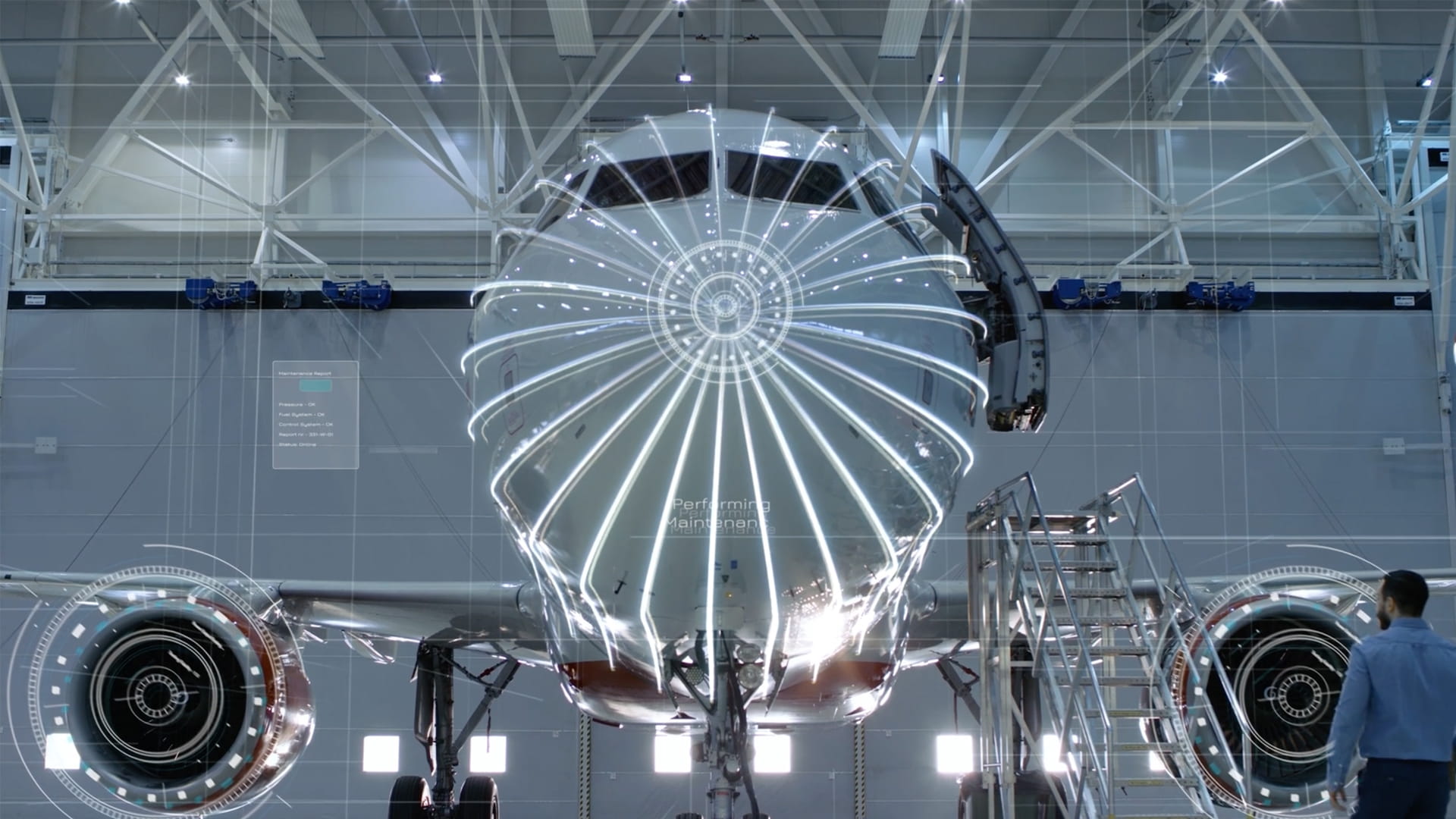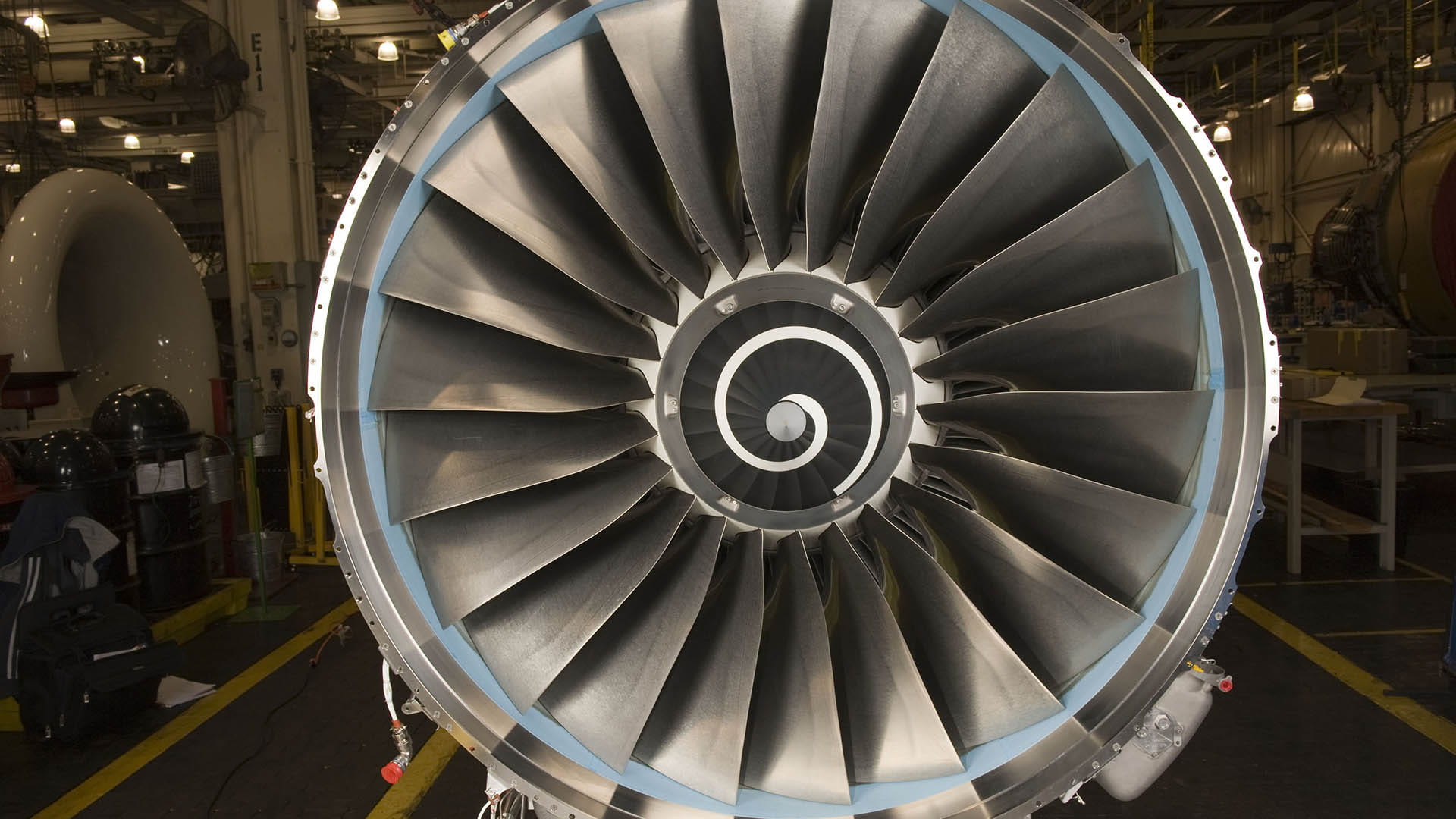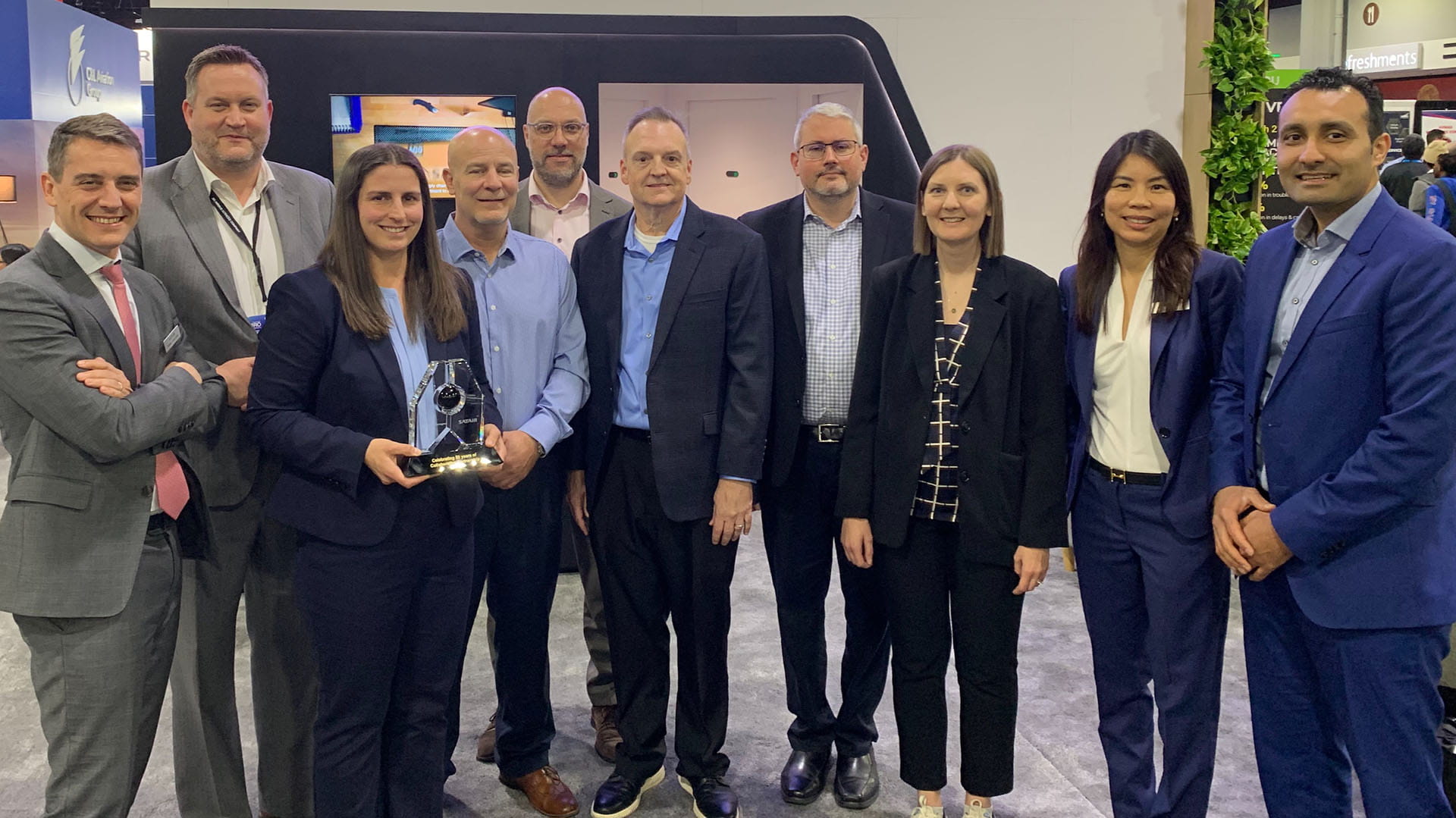GaN is part of a microchip that converts electricity to RF energy very efficiently
From the vision to the mission
With Raytheon’s Advanced Technology business, ideas once far-off take flight
A bright yellow robotic arm stretches 25 feet above the production line, grabbing 150-pound gray cubes one at a time and placing each carefully and meticulously into a six-sided frame.
The robot is building a SPY-6 radar – the most advanced in the U.S. Navy fleet, notable for its power and flexibility. Those gray cubes can be combined and configured to fit on any ship, and inside each is a tiny semiconductor that makes it all possible: Gallium nitride, a crystalline substance that helps radars pump out more RF energy.
The use of gallium nitride, or GaN, in radar systems is among the signature early achievements of Raytheon’s Advanced Technology team, which discovers and develops not only early-stage technologies but also the next-generation weapons and sensors that they go in.
“Our team includes the brightest minds in the business who apply technical mastery to the work they do every day. They care about our mission to protect our men and women in uniform,” said Colin Whelan, the team’s president. “That’s why they’re here.”

“It is not technology for technology’s sake. It’s technology to get capability to the field, and I think we’re all very passionate about that.”
Colin Whelan, Advanced Technology business president
A breakthrough within a breakthrough
Advanced Technology’s work with GaN began in response to the U.S. Navy’s plan for better radar capability – a plan that ultimately led to SPY-6.
“The Navy said, ‘We see the threats coming, we need a new radar, and we can’t build it out of gallium arsenide,’” said principal engineering fellow Steve Bernstein. “It became obvious that if we tried to build the radar out of the premier semiconductor at the time, which was gallium arsenide, it was going to be large and expensive because you would have to put together many of these little power amplifier chips to get to the power level you wanted.”
Advanced Technology then matured a GaN prototype through a program sponsored by the Defense Advanced Research Projects Agency, U.S. Air Force and Missile Defense Agency. That work proved they could make a radar that was smaller with five times the power of a gallium arsenide radar.
The team worked with another Raytheon business unit, Naval Power, to design the SPY-6 radar to extract the maximum performance with the smallest size and weight using the new GaN semiconductor.
Why gallium nitride?
Radars work by covering an area with RF energy, then measuring the time it takes to reflect and return off a target. Here’s how GaN makes SPY-6 the Navy’s most powerful radar.

That efficiency produces more power in a smaller footprint to detect threats faster
Now, the Navy plans to install SPY-6 on every new destroyer – nearly 40 in the next decade.
Raytheon built a 1.7 million square-foot production facility in Andover, Massachusetts, with advanced manufacturing capabilities to build the radars fast enough to meet the Navy’s demand.
“Our team was the first to develop GaN for military use, put it into production at one of Raytheon’s factories, and make it reliable for defense applications,” Whelan said. “That became the foundation on which the radar was designed – that single little chip. Now, here we are installing radars with GaN on ships, and they’re delivering even more performance than we thought.”
Here are two more ways Raytheon Advanced Technology has developed new capabilities for the warfighter.
From record-breaking concept to real-world hypersonics
Hypersonic vehicles – those that go faster than Mach 5 – can cross the continental United States in less than an hour. With that speed comes heat so intense it changes the vehicles’ shape – and therefore, their aerodynamics.
That problem has held back hypersonic flight for decades. But, Advanced Technology, through a DARPA program, proved it was possible to build a hypersonic airframe that could fly far and fast enough to meet the military’s needs.
The team broke records when they flew a system called the Hypersonic Air-breathing Weapon Concept, or HAWC, faster than Mach 5 for more than 300 miles at higher than 60,000 feet.
“It created a category of weapons capability that didn’t exist before.”
Kevin Bredehoft, HAWC program manager
The HAWC concept combines Raytheon’s air-breathing hypersonic weapons with Northrop Grumman’s scramjet engine, which compresses fast-moving air around it to fuel sustained propulsion at extremely high speeds. Scramjet systems are also highly maneuverable, meaning they can easily evade traditional interceptors.
The team’s prototype proved the scramjet design was capable and that the technology was mature enough to develop a real weapons system, so the U.S. Air Force opened a competition for a program of record. Raytheon competed for – and won – one of the largest hypersonic weapons programs: the Hypersonic Attack Cruise Missile, or HACM, a first-of-its-kind system that is expected to be in use by 2027.
“We set the record in the United States for the first working scramjet-powered missile,” Whelan said. “It’s not often you get to say those type of words, where your team is breaking every record out there and then winning a program of record to actually build missiles that can go against some of these tough threats. It’s an amazing feeling for everybody.”
How did they do it?
Hypersonic flight conditions are near-impossible to replicate physically on the ground, said HACM program manager Nate Szyba, so the Advanced Technology team invested heavily in digital simulations and modeling to build a first-of-its-kind concept. Here’s how it helped.
Very few test facilities in the U.S. get close to replicating flight performance, and they use extraordinary amounts of energy
Using digital threads and modeling to simulate thousands of hours of flight helped use fewer resources and work faster
Simulation also allowed them to test multiple aspects of flight at the same time, rather than separately, for more realistic results
Each test provided results that helped optimize their design
When HAWC flew for the first time, the system’s trajectory matched their models almost perfectly.
“Prior to flight, we used various sub-system tests to anchor our prediction tools, like how surfaces heat up during flight or how much thrust the engine produces over the course of the trajectory,” said Sally Warning, who led the ground portion of the test. “Then we could insert our real flight data back into those models, which added more credibility to our next round of predictions.”
Being able to prove their concept in flight, Bredehoft and Szyba said, gave them confidence that next-generation hypersonic weapons will soon be a reality.
It also helped win over some skeptics.
“There’s still people who say that hypersonics are the future and they always will be because it’s been so difficult to put into practice,” Szyba said, “but I think a lot more people are hitting the ‘I believe’ button.”
The race to build a new land radar
The engineers were ready to show the U.S. Army their design for a new air and missile defense radar – until the Army said they’d need more power than the original specifications indicated.
And, they’d need it in about a year and a half – an unusually fast pace in an industry where major programs have historically unfolded over years or even decades.
It was clear that the team would need to design something completely new, said Derek Rocca, who led the technical team for the new hardware architecture. They scrapped their original concept and began sketching on a napkin.
Working with another Raytheon team, Land and Air Defense Systems, Advanced Technology designed a system that gives the Army enough range to detect and defend against modern threats in the airspace.
“We took the best pieces of 20 or 30 years of legacy radar knowledge across the company, did many trade studies, and spent three months developing the best architecture,” Rocca said.
The result, just 17 months later, was a prototype of the Lower Tier Air and Missile Defense Sensor. The system, also known as LTAMDS, can defend against threats ranging from small, slow drones to ultra-fast hypersonic missiles approaching from several directions at the same time.
It exceeded the Army’s expectations.
What can LTAMDS do?
Like SPY-6, LTAMDS uses gallium nitride to boost its range and resolution. Here are a few other ways Raytheon Advanced Technology achieved remarkable capability with their design.
The digital AESA radar performs multiple tasks simultaneously
Modules work independently and can be replaced easily for improved reliability
It has a software-defined architecture to adapt to current and future battlefield technology
A novel slat design better manages heat to produce unprecedented power
Raytheon earned a contract to produce six radars. All are undergoing simultaneous testing and integration to expedite their delivery to the field.
“To build six of them in five years and already have a series of successful flight tests is unheard of,” said Bob Kelley, a senior director for Raytheon Land and Air Defense Systems. “I can’t compare it to anything.”
Its success was made possible by years of research and development but also, Rocca said, the team’s use of agile work methods, along with advanced technologies like artificial intelligence, machine learning and additive manufacturing.
“We had a strong team, and we willed this to success in every aspect, from design to release to procurement to build and testing,” Rocca said.
Steve Labitt, who was the project’s technical director, said the team’s motivation came from knowing what the technology would mean for the company and their customers.
“This is going to be eye-watering, transformational performance for the country and our international partners. Just to be a part of it and say, ‘I was there at the beginning, and I helped drive this,’” Labitt said, “I can’t ask for anything more.”



